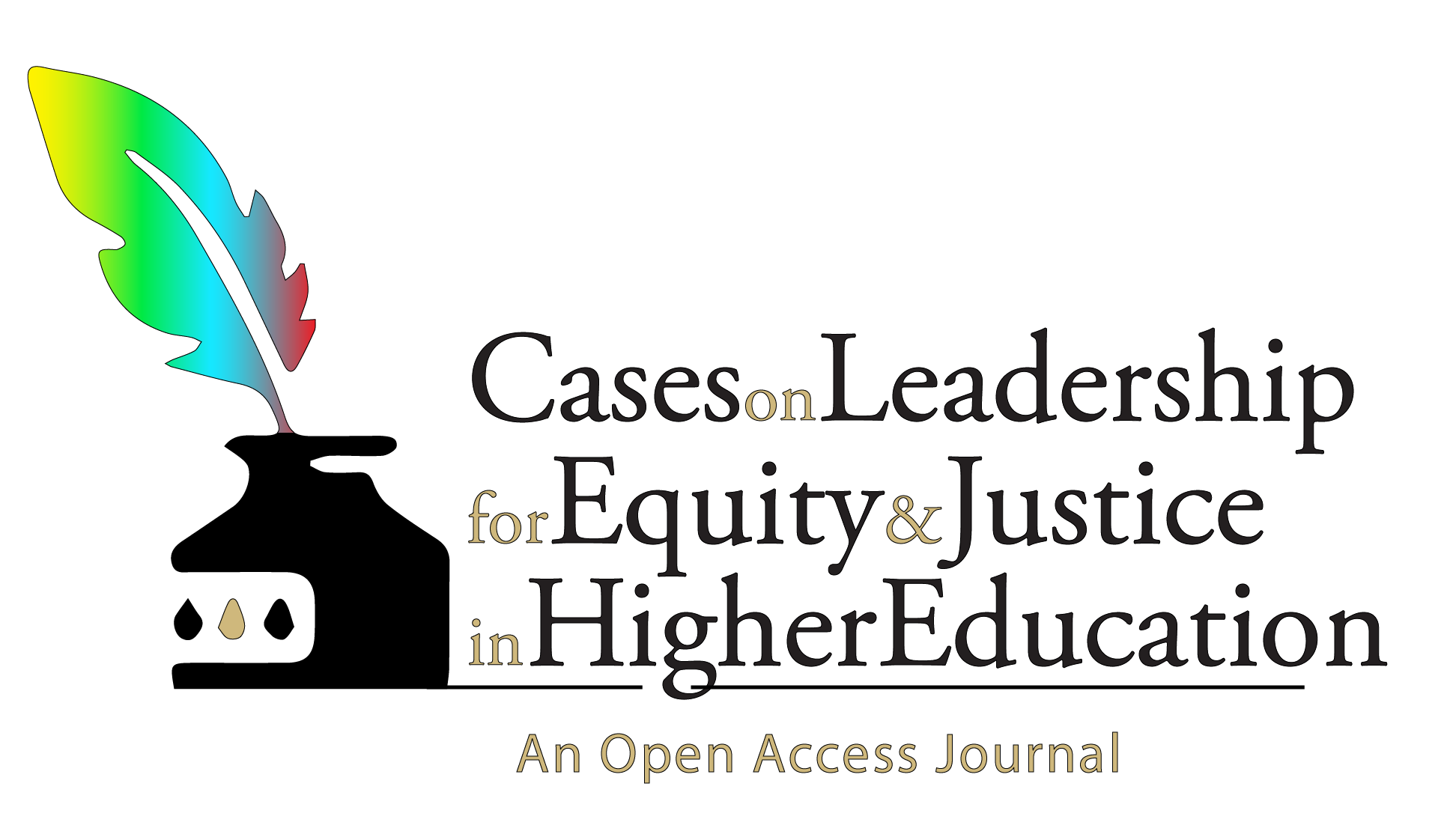Kelsey Draper, University of Colorado - Denver
Michelle Hoffer, University of Colorado - Denver
Beckie Pyles Munoz, University of Colorado - Denver
Steven C. Richardson, University of Colorado - Denver
Georgette E. Vigil, University of Colorado - Denver
Abstract
Perception of a word causes tension during a virtual presentation discussing improvements for diversity efforts at a university. The presentation comes to a halt as key players have chosen a team name, which leads to intercultural conflict and one participant’s understanding of that word choice as a microaggression and an appropriation. This case study examines the interactions with team four and the situation that unfolds. A White cisgender male was ready to communicate the team’s work but did not get past sharing their team’s name when another participant questioned the name. These case study questions and discussion are designed to examine other possible outcomes.
Keywords diversity, tension, cisgender male, race, misappropriation, intercultural conflict, communication, perceptions, miscommunication, words
Cite as: Draper, D., Hoffer, M., Pyles Munoz, B., Richardson, S., & Vigil, G. (2023)(4).
Setting
University A (UA) is a public university founded in 1870 with a student population of just over 33,000. UA offers over 4,000 courses in 150 fields of study, with a faculty-to-student ratio of 18:1. UA has the number one graduation rate for their state in public universities and an 86% retention rate.
UA’s core values are to create a welcoming and inclusive environment, to maximize the success and inclusion of students, staff, and faculty, and to engage with diverse perspectives through a growth mindset. The strategic imperatives at UA are to
- Develop global citizens and leaders
- Make a lasting impact in our world
- Be the top university for innovative practices
It is the fall of 2021, post-COVID. Universities and colleges begin welcoming students, faculty, and staff back onto campuses. Mental well-being, innovation, affordability, safety, and diversity, equity, and inclusion (DEI), are hot topics in higher education and are a driving force for creating initiatives and committees on the UA campus. The Innovation Committee was created to support DEI initiatives on the UA campus.
The Innovation Committee met via Zoom to discuss pushing DEI initiatives forward. Other groups from across campus met the months before developing ideas for DEI initiatives. They then brought these ideas to the Innovation Committee meeting. At the Innovation meeting, there were 60 participants, of which 75% were women. The participants pitched their prior-developed DEI ideas to the Innovation Committee for approval. Once approved, the ideas would flow up to the executive council for approval. However, the Innovation Committee process was abruptly halted after the speaker was “called out” by a participant. Please read further to learn more.
Key Players
Ms. Scarlet Begonias - Director of Organizational Engagement and Change
Ms. Begonias began work at UA in March 2016 and held the role of Innovation Program Manager in the Office of Analytics and Executive Aide to the Senior President. She joined the Business Strategy leadership team in 2020 as Director of Organizational Engagement. Before working at UA, she spent more than a decade working in finance administration and human resources. Begonias holds master's degrees in organizational leadership and business management and a B.A. in Psychology.
Mr. Jack Straw (Key Player 1) - Professional Development Manager
Mr. Straw began work at UA five years ago as the employee development manager in the Department of Safety and Facilities. He is the program manager for a staff mentor program and the co-founder of a staff inclusive excellence committee. Straw helped develop the Frontline Service Worker Computer Literacy Program and the Staff Exchange Program with colleges/schools across the state in which the institution resides. Mr. Straw has served as chair of the President’s Initiative for BIPOC Community Involvement (PIBCI) and is a member of the Staff Council. In his free time, Straw enjoys camping, skiing, rafting, and all things outdoors.
Mr. Casey Jones (Key Player 2) - Program Manager for Frontline Service Employee Development
Prior to his current position, Mr. Jones was Executive Chef for UA for 10 years. He is passionate about professional development of frontline staff and works daily to bring equitable advancement opportunities for staff.
Mrs. Stella Blue (Key Player 3) - Director of Communications and Strategic Initiatives
In the CFO office, Mrs. Blue provides leadership and support for communication priorities and projects across Finance and Business Strategy. She previously worked as the Director of Advising Methods in the College of Arts and Sciences for two and a half years and the Director of Student Services in the Division of Continuing Education for eight years. Blue holds a B.A. and an M.A. in Chinese Literature and Culture.
Ms. Ryder Rose (Meeting Participant) - Director of DEI
Ms. Rose comes to UA from the University of B, where she was part of the Multicultural and Leadership Development Center. She is excited to be part of the team that will focus on the peer education program, diversity education and community building. With this as the focus, the team will create a positive learning environment for students that encourages personal development, self-reflection, and academic success.
Professor Althea Grey - Associate Professor; Faculty Fellow
UA Associate Professor Grey is a member of the Theatre Department for Institute A. She is the first tenured faculty globally for an international dance group. This interdisciplinary work and her performances, approached through the vantage point of her multi-heritage identity, have inspired connections to many astonishing people and fields of study. Her work also took her around the world, instigated a life-long devotion to learning, and inspired her efforts toward uplifting others through education.
Situation
To support the strategic imperative to be the top university for innovation, University A (UA) developed the Innovation Committee in 2017 through Essential Resources and Foundations. The Innovation Committee launched by providing UA faculty and staff an opportunity to identify problems and design solutions to create a better workplace in a playful, structured, supportive learning environment. The charge was to develop proposals to advance Diversity, Equity, and Inclusion (DEI) at UA. Since its inception, more than 100 teams have competed for the opportunity to implement their ideas to improve DEI efforts at UA.
In the fall of 2021, a team consisting of UA staff members, Casey Jones, Jack Straw, and Stella Blue, entered a bold idea into the Innovation Committee program, which was to use the staff tuition benefit at the community college and trade school level. Their tentative team name was Team 4. Team 4 interviewed subject matter experts, conducted surveys, and met with key leaders throughout the University A System to inform their work. As they gathered data, Mr. Jones, a Black man, suggested changing the team’s name to Shoushin. Shoushin is a Chinese word meaning an attitude of openness.
After team Shoushin completed their work, they prepared their final presentation, which would the first presented to the 2021 Innovation Committee cohort, followed by a presentation to executive leadership at UA. Team Shoushin selected Mr. Straw, a heterosexual, White, cisgender male, to present their proposal to the cohort. While presenting, Mr. Straw provided context as to why they chose the team’s name, Shoushin, then presented their proposal and how using the staff tuition benefit would increase minority representation in the UA community.
Immediately following the presentation, Ms. Rose confronted Mr. Straw. Ms. Rose is an Hispanic female and, ironically, was wearing a shirt that said “Warrior.” She asked Mr. Straw, “Do you identify as Asian? What gives you the right to appropriate an Asian word as your Team name? That is a microaggression and a misappropriation!”
The Innovation Committee meeting came to a screeching halt. Individuals who supported Ms. Rose and her assertions that a White male using a Chinese word for a team name was both a microaggression and misappropriation. Some participants vocalized aggravation in the meeting through the Zoom chat feature. However, other participants were uncomfortable sharing and sent private messages to Mr. Straw, Mr. Jones, and Mrs. Blue of the Shoushin team, voicing confusion, opposition, and support for the name the team had chosen. Mr. Jones spoke up, informing the cohort that he was the one who came up with the name and provided further context. Mr. Straw and Mr. Jones had developed computer literacy and English as a Second Language (ESL) programs and had been very purposeful in reaching some of UA’s most marginalized staff. Most staff worked for facilities management custodial teams, of which 50 % identified as Asian, including the regions of Lao, Tibet, Nepal, China, and Vietnam. Mr. Jones felt comfortable using the term to reflect the work and goal of the team. Additionally, Mr. Jones asked the group, had he been the one presenting and introducing the team’s name Shoushin, would it have gone unnoticed? And would it have reached the level of vitriol that Mr. Straw had experienced? The room fell quiet when this notion was proposed.
A few days had passed, and Mr. Straw thought he would hear more from Ms. Rose, but he had not. Instead, he reached out to Ms. Rose via email to better understand why she called him out, hear about her feelings, and listen to her insights. Although Ms. Rose was a director at UA, and Mr. Straw was not, he felt he could reach out to her. As a result, they scheduled a face-to-face meeting for a few days later. Mr. Straw was intentional and interested in being a better DEI educator across campus and in the community.
Mr. Straw left the meeting with Ms. Rose with no clearer understanding of whether or not it was appropriate for him to use a Chinese name. However, he felt it was not a misappropriation because he had a good idea of what was and was not a misappropriation.
The event triggered a ripple effect across campus. Several teams dropped out of the program, feeling it was not a safe space and stating that how Mr. Straw had been treated amounted to an attack on his character. For the next two meetings with the Innovation Committee, it was clear that the incident weighed heavily on the remaining participants impacting communication and outcomes. This derailed moving forward with the wonderful ideas and proposals from the multiple teams.
Teaching Notes
Diversity, equity, and inclusion (DEI) are at the core of the mission of most higher education institutions, particularly for public colleges and universities, where there is an institutionalized commitment to uplifting the well-being of the state and surrounding communities (Higher Education Today, 2021). However, increasing diversity can lead to conflict and misunderstanding as we move toward furthering DEI work in higher education. Effective leaders are responsible for guiding a diverse workforce and building a healthy culture of respect, empathy, transparency, authenticity, and trust. This case study is designed for use in graduate programs and professional development programs for higher education. It highlights miscommunication and conflict issues that may arise when working in a diverse higher education, workforce setting.
Discussion Questions for Graduate Students
- Recognizing words matter, Mr. Straw met with Ms. Rose after the incident. Mr. Straw wanted to acknowledge that a difficult situation occurred and connect with Ms. Rose, listen to her perspective, and seek a resolution. Assuming an apology is warranted, students should follow the framework below.
- How would you proceed with an apology? [Resource for this question prompt]
- The instructor should break students into random small groups to form ideal statements for each of the following five recommended parts of an apology:
- Acknowledgement of wrongdoing.
- Gratitude to the person that provided feedback or called you out.
- An intent to change and educate yourself.
- Commitment to fostering or encouraging an inclusive environment and psychological safety.
- Specific actions you plan to take.
- Watch this video- In this video, the aspects of miscommunication are identified.
- Part One: Based on these aspects, would you consider Mr. Straw’s word choice a miscommunication or microaggression? Explain your answer.
- Part Two: Ms. Rose is uncomfortable with Mr. Straw’s word choice but is too fearful of reporting it to the Title IX/AAEO Office. How would you make this report on behalf of Ms. Rose to ensure you do not miscommunicate the incident facts?
- How do the group members and Ms. Rose’s title, gender, ethnicity, positions, and title, influence their responses? Do responses differ based on ethnicity, title, gender, and position?
- Describe a time when you were held accountable by a person for acting in ways that were perceived as inequitable in a meeting. What would you do differently? What protocols should be considered or applied during meetings to aid equitable practices?
Schedule time or debrief post activity.
Activities for Professional Development
Human beings that operate in the same organizational structure have the potential for conflict. The way people react in certain situations they are placed in is multifaceted. For example, Power Distance is a dimension that focuses on the status of people within the society which divides them into separate groups (Koyuncu & Chipindu, 2019). In addition, cultural factors influence the way people behave and react to certain situations in different ways. Cultural factors such as religion, communication, values, and gender play a pivotal role in influencing conflicts within an organization (Koyuncu & Chipindu, 2019).
Reference reading for this section
Koyuncu, A. G., & Chipindu, R. D. (2019). How cultural differences influence conflict within an organization: A case study of near east university. International Journal of Organizational Leadership, 8 (1), 112-128. DOI: 10.33844/ijol.2020.60478
Moderator(s) of the activity should place educators, administrators, and staff into random small groups. Moderator(s) of the activity will provide the original case study to all groups and facilitate discussion using the teaching notes provided in this section. Next, the moderator(s) will provide alternate scenarios to different groups, which focus on changing the key players’ gender, race, identity, and job title. Groups will re-work the case study with the new key players below. Does the group anticipate certain responses? Did the response and/or outcome change? What are the key influencers that predict the changed response? Was conflict avoided? Did communication change? Did you identify any micro-aggression?
Debrief with groups and discuss reasons the outcome of the scenario may/may not change when key players change.
First alternate key player scenario
Key player 1-team presenter/speaker: Black cisgender male, Provost
Key player 2-team member: Hispanic, cisgender female, associate professor
Key player 3-team member: White, gay man, director of institutional effectiveness
Key player 4-meeting participant: Asian, cisgender female, associate dean
Second alternate key player scenario
Key player 1-team presenter/speaker: Hispanic, cisgender female, Chancellor
Key player 2-team member: White, cisgender female, full-time professor
Key player 3-team member: White gay woman, office administrator
Key player 4-meeting participant: Black, cisgender female, office of Information Technology
Additional Questions:
General feelings of the case? Who do you identify as the key players? What are your feelings about the individual players and the situation?
What were the intended and unintended consequences of the key players and/or the situation?
What if we told you that a meeting participant was one of your classmates, would that change your perspective?
References
Clayton, T.B. (2021, January 13). Refocusing on diversity, equity, and inclusion during the pandemic and beyond: Lessons from a community of practice. Higher Education Today. https://www.higheredtoday.org/2021/01/13/refocusing-diversity-equity-inclusion-pandemic-beyond-lessons-community-practice/
Hampsten, K. (n.d.). Katherine Hampsten: How miscommunication happens (and how to avoid it) | TED Talk. Retrieved January 5, 2023, from https://www.ted.com/talks/katherine_hampsten_how_miscommunication_happens_and_how_to_avoid_it
Hutto, C. (2021). How to handle getting called out & learn from the mistake. InHerSight.com. Retrieved March 9, 2024, from https://www.inhersight.com/blog/allyship/how-to-handle-getting-called-out
Kezar, A. & Posselt, J. (2019). Higher education administration for social justice and equity: Critical perspectives for leadership. Routledge.
Koyuncu, A. G., & Chipindu, R. D. (2019). How cultural differences influence conflict within an organization: A case study of near east university. International Journal of Organizational Leadership, 8(1), 112-128. DOI: 10.33844/ijol.2020.60478
About the Authors

Beckie Pyles Munoz is the Program and Experiential Learning Coordinator and lecturer for the College of Business at the University of Colorado Colorado Springs. In this role she assists business students with finding experiential learning and internship opportunities and supports students in their academic pursuits. She instructs first-year seminars and career development courses. She is currently a doctoral candidate in Education at the University of Colorado Denver in the Leadership for Educational Equity in Higher Education program.
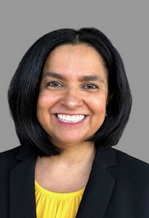
Georgette E. Vigil is an accomplished alumni leader, playing a pivotal role in fostering strong relationships. Her efforts motivate volunteers, staff, and leadership to actively participate in meaningful initiatives, making everyone feel valued and integral to the institution's growth. These initiatives elevate awareness, pride, participation, and support for the institution. With 18 years of experience in Alumni Engagement and Outreach, she currently serves as the Senior Director of Alumni Engagement and Donor Relations at the University of Colorado School of Law.
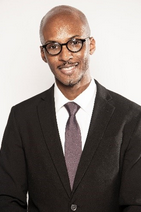
Steven Richardson serves as director of strategic initiatives for the Office of the President at Weber State University in Ogden, Utah. He also serves as a practicing Mississippi attorney. In his role as director of strategic initiatives, he combines over 15 years of communications and legal experience, spanning news reporting, public relations, marketing, Title IX, and trial advocacy. Together, these skills present him as a builder and protector of brands. Most recently, Steven shepherded Weber State through and to producing a new strategic plan, “Amplified,” while continuing to help President Brad Mortensen build and protect his brand as the 13th president following his appointment seven months before bringing Steven on board. Although Steven’s daily work is fluid based on President Mortensen’s rapidly changing tasks at hand, Steven serves as the primary contact for the strategic plan as the university wraps year-three implementation. Steven looks forward to the studies and research in educational equity across higher education, to enhance his work on behalf of President Mortensen and Weber State University, as the university seeks to close equity gaps across historically underrepresented populations.
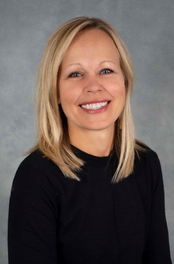
Michelle L. Hoffer brings over 18 years of higher education experience to her role and is currently a program chair and full-time faculty at the Community College of Denver (CCD). In addition to her administrative role, Michelle is a lecturer for health & wellness, health profession, and public health courses at CCD. Michelle demonstrates a passion for her students in the classroom by engaging students by using multiple teaching methodologies and strategies and providing opportunities for students to succeed. She has specific experience around didactic and clinical instruction, curriculum and program development, concurrent enrollment, assessment, transfer pathways and inter-institutional courses. She looks forward to using her experience as a foundation to identify and explore ideas and opportunities to increase student retention, access and diversity, along with professional opportunities in higher education. Currently Michelle is developing the college’s program review process and co-chairing the program review committee, among other departmental and college service work at CCD. Michelle is currently a doctoral candidate in Education at the University of Colorado Denver in the Leadership for Educational Equity in Higher Education program.
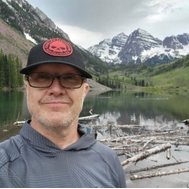
Kelsey Draper is a skilled employee development professional, passionate about the staff experience in higher education with a particular interest in developing historically marginalized communities. He’s a skilled trainer and facilitator and enjoys networking with units across the CU Boulder campus. In his role as a learning and development project manager, he leads programs that include mentoring, leadership development, a GED program, and a computer literacy program for frontline staff. He has served as a tri-chair of CU Boulder Staff Council, served on the IDEA Council, and was the staff representative in developing a community oversight board for the University of Colorado Police Department. Kelsey is currently pursuing his EdD in Equity in Higher Education from the University of Colorado Denver.
